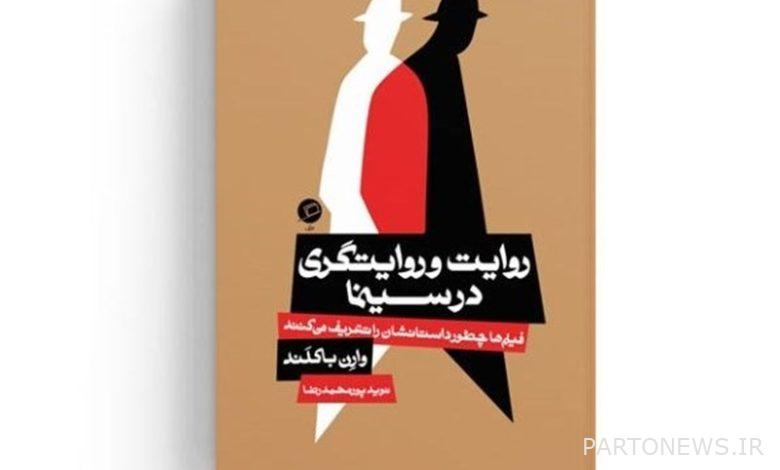“Narration and narration in cinema” was published

“Narration and Narration in Cinema”, written by “Warren Buckland” and translated by Navid Pourmohamedreza, was published by nearby publishing houses.
Charso Press: The book “Narrative and Storytelling in Cinema” is from the Shortcuts collection of Columbia University Press. Warren Buckland, the author of this book, based on the idea that narration is the main factor in organizing all kinds of films, examines the relationship between narration and cinema. He tries to distance himself from the complex terms and vague theories and in a simple, understandable and clear language, with the help of examples from famous films, he presents to the reader a picture of how narration and storytelling work in cinema.
The book “Narration and Storytelling in Cinema” seeks to find the answer to the question, how do movies tell their story? Warren Buckland, the author of this book, based on the idea that narration is the main factor in organizing all kinds of films, examines the relationship between narration and cinema. He tries to stay away from complicated terms and vague theories and in a simple, understandable and clear language, with the help of examples from famous movies, he presents to the reader a picture of how narration and storytelling work in cinema.
The overall structure of the book consists of two main parts. The first part, entitled “Fundamentals”, begins with a brief discussion of the emergence of narrative, narration, and narrative elements in early cinema, and then describes how the manipulation of cinematic space and time can enthrall the audience into the fictional world of the film.
In this section, which consists of four chapters, Buckland explores the narrative structure of classic and contemporary Hollywood films with reference to examples such as Hitchcock’s works and the James Bond film series; To investigate and explain the function of narration in cinema, he uses the case study of films such as “Lost Girl”, “Possessed” and “Jurassic Park”; and describes narrative elements such as expression and reflexivity with the help of examples from the two films “The Grand Budapest Hotel” and “Marney”.
Warren Buckland, in the second part of the book, entitled “Types of Storytelling”, applies and expands the concepts introduced in the first part to examine certain modes of narrative cinema. Instead of a complete and detailed overview of the film narrative throughout the history of cinema and the whole world, this section looks for some important and dominant trends in the contemporary cinema landscape, such as the issue of feminist narratives and female filmmakers (by examining the examples of The Lost Girl and Orlando) and the enduring importance of art cinema. It goes as a certain type of film with a limited audience (check out Alice in the Cities and Inland Empire for example). These specific case studies show how any form of filmmaking can be identified and analyzed from a storytelling perspective.
Warren Buckland is a prominent researcher of cinema and film studies who works in areas such as film theory, narratology and contemporary American cinema and has published popular books. One of his most important books is “Narrative and Storytelling in Cinema” from the Shortcuts Collection of Columbia University Press.
It is stated in a part of the book: “In the movie “The Lost Girl”, the story of Amy’s disappearance is initially limited to Nick’s knowledge; His absence is a self-evident central gap in the narrative. Narrative introduces Aimee as the riddle of the narrative, an enigma that needs to be solved and revolves around certain questions: Where is Aimee? Has it been kidnapped? At the beginning, the audience is in the same place as Nick and the police, and this means that the film follows the rules of the genre of detective stories. At best, the audience knows only as much as the detective does, or perhaps even less than he does, and is thus surprised or shocked when the hidden information is finally revealed. A detective story is different from a suspenseful thriller; The latter relies on a hierarchy of consciousness, where the audience is positioned as omniscient and thus has more information than the characters, creating suspense. “Lost Girl” becomes a suspenseful thriller precisely at the moment when it fills its big, self-centered, temporary gap: the film reveals that Amy herself plotted her own disappearance. Narration by showing the execution of this plan to the audience puts them in a superior position to the police and Nick. After this narration, it oscillates between two storylines: the police and Nick in one story, Amy in the other.”

